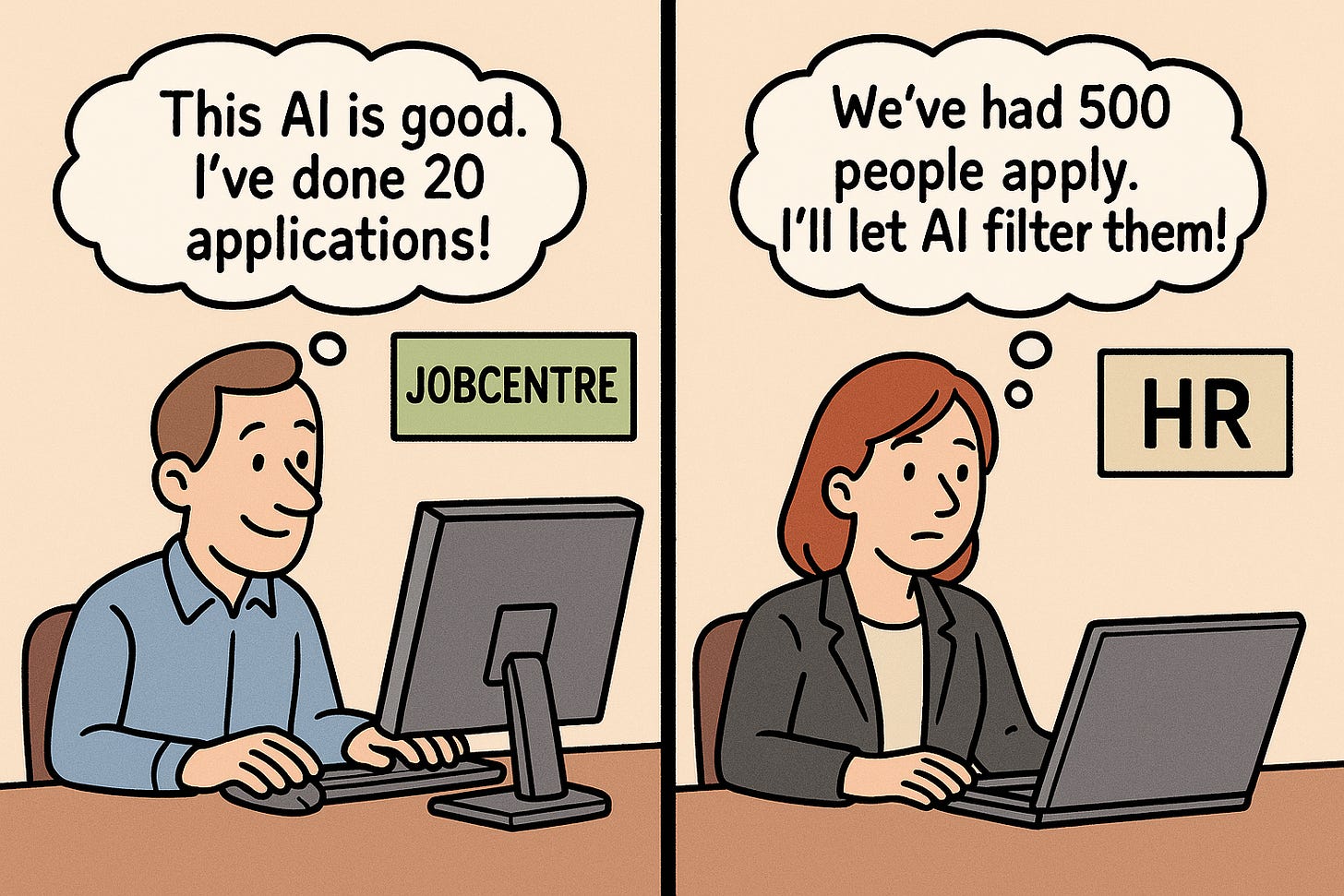At the moment, although unemployment is ticking up in the UK and claimant rates for Universal Credit are at record levels, we’re not yet seeing a jobs crisis ushered in by AI.
While the economy is notionally the fastest-growing in the G7, I think most of us involved in business know that things are pretty sluggish. Stubborn inflation, as well as the tax and national insurance rises, haven’t helped things. Broadly, we’d conclude that any decline in job opportunities is right now attributable more to the economic weather than the rise of the bots.
Having said that, TikTok announced this week that hundreds of British content moderators may be replaced by AI, which is the kind drip-drop impact of the technology I think we’ll be seeing over the next couple of years. My hunch is that we’re in a twilight zone or a phoney war right now (select favoured cliché). Perhaps the remainder of the 20s will play out like this, particularly if the capability of AI agents has been wildly overhyped by Silicon Valley, as many suggest.
We’ll see evidence of jobs going in specific sectors, but the impact will be sporadic and hard to pin down. As I’ve said before, it may be that self-employed people - particularly in sectors such as consultancy and the creative industries - bear the brunt of AI’s impact initially and don’t show up in unemployment figures. They just have fewer gigs, bring in less revenue and pay less tax.
I don’t think the overall trajectory has changed, however. Eventually, the lull will be over and the storm will roll in. Pretty much all administrative, professional, cognitive and creative work will be impacted at some point. Followed fairly closely by blue-collar warehouse and logistics roles, where robots will pick from shelves, package stuff up and maybe even drive it around.
But what if you’ve already lost your job or are about to be made redundant right now? Well, the solution, according to the UK government is… wait for it… AI!
Yes, the government has announced that it is going to provide job seekers with an ‘AI helper’ to relieve the burden of applying for work.
Superficially, this seems like a clever idea, as it allows individual applicants to fire off a greater number of applications and put themselves in the running for more opportunities.
There are, however, a few fairly obvious problems.
The number of jobs available to the applicants will be exactly the same as before.
The use of AI doesn’t create more vacancies, but merely increases the ease with which people can apply for the ones that already exist.
Recruiters will receive a much greater number of applications for roles, making it harder to spot the genuine talent. The AI will no doubt have a smoothing effect too, ensuring one application is even more like another than ever before. The government bot will happily present an image of applicants as being better qualified for the role than many actually are, leading to more time wasted in interviews that go nowhere.
And in a world of high-volume applications, employers who haven’t already resorted to filtering the CVs with AI may decide that the time has now arrived.
AI applications, filtered by AI recruiters. Unemployed people facing knock-backs and ghosting on a scale that will quickly become quite frightening and depressing.
There is a strong element of gaslighting here.
The message to unemployed people is that they’re out of work because they’re not efficient enough at applying for it. This is largely baloney. And they’re being told that if they use AI, they’ll have a better chance of getting a job than they did before. Which mathematically can’t be true for everybody, can it?
Workers are meanwhile encouraged to use AI to make themselves more ‘productive’ and ‘efficient’. So productive and efficient, in fact, that their team will shrink in half. And if they’re unfortunate enough to be one of the lay-offs, they mustn’t delay in using AI to get themselves back into employment.
But at some point, reality bites.


